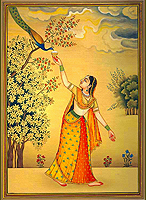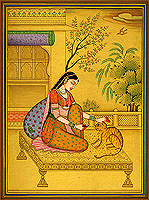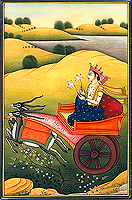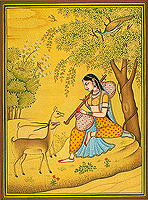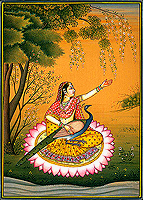Amedeo Modigliani was an Italian artist and sculptor. He was born on July 12, 1884, into a Jewish family at Livorno, in Tuscany. In short, he was also known as ‘Modi’ and was handsome and amorous. Today his elegant portraits and lush nudes at once evoke his name. He was greatly influenced by African art, to which many of his deformations of thehuman figure are due, most notably the elongation of faces. He was also interested in Cambodian sculpture. The circumstances forcedModigliani to struggle against poverty and chronic ill health, and ultimately died due to tuberculosis and excesses of drink and drugs at the age of 35. After his death, his mistress Jeanne Hebuterne killed herself the following day while carrying Modigliani’s unborn child.
 Amedeo Modigliani worked in Micheli's Art School as a very young boy. He preferred to paint indoors. The paintings of Modigliani, highly characteristic and delicate, are marked by sinuous lines, simple and flat forms. After 1915, he devoted himself entirely to painting and produced some of his best paintings. Some of his famous paintings are Reclining Nude (1919, Museum of Modern Art, New York City) and Nude on a Divan (1918, National Gallery, Washington, D.C.) etc. Modiglianibegan painting elongated portraits and nudes, which attracted little praise from critics. All paintings are courtesy of Art of Legend India.
Amedeo Modigliani worked in Micheli's Art School as a very young boy. He preferred to paint indoors. The paintings of Modigliani, highly characteristic and delicate, are marked by sinuous lines, simple and flat forms. After 1915, he devoted himself entirely to painting and produced some of his best paintings. Some of his famous paintings are Reclining Nude (1919, Museum of Modern Art, New York City) and Nude on a Divan (1918, National Gallery, Washington, D.C.) etc. Modiglianibegan painting elongated portraits and nudes, which attracted little praise from critics. All paintings are courtesy of Art of Legend India.
